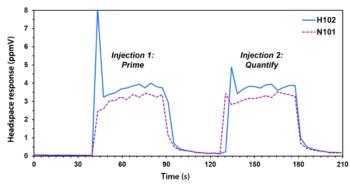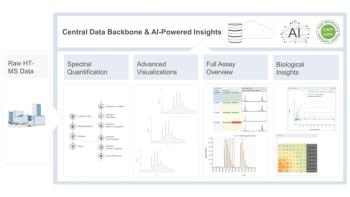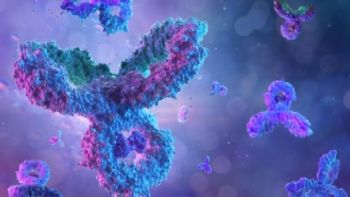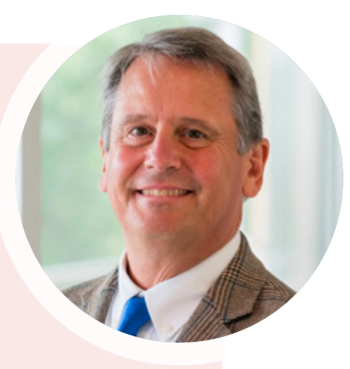
The LCGC Blog: Where Do Macromolecular Separation Scientists Meet?
In this month's edition of The LCGC Blog, Andre Striegel discusses where macromolecular scientists around the world can convene and share their insights.
During the past several months, I have fielded the titular question quite a few times from colleagues across the world. From Asia to Europe to Africa to South America and across the United States (I haven’t received any inquiries from Oceania), macromolecular separations practitioners would like to know what meetings exist in this area. I haven’t communicated with other well-established colleagues across the world to find out if they are receiving the same inquiry, as I find it somewhat amusing (and extremely flattering) that I would be sought out by people, many of whom I’ve never met in person, for this type of information.
Having at one point in my life donned a teachers’ bonnet (figuratively speaking), my time as a university professor made me aware that if one person has a question, it likely means that many others also have that same question. To that effect, a somewhat briefer blog than customary on my part, presenting to the reader a few options regarding meetings both large and small in the area of macromolecular separations.
To begin, there are really no large meetings devoted to macromolecular separations. That does not mean that large meetings are devoid of presentations and short courses in this area, simply that these offerings constitute only a small percentage of what goes on at large meetings. Examples include the American Chemical Society (ACS) national meetings, Pittcon, and–I am told (because I’ve never attended)–Analytica and Pacifichem. At, for example, an ACS national meeting, macromolecular separations talks and posters may be scattered among many different Divisions: Analytical, Polymer, Polymeric Materials Science and Engineering, Colloids, Carbohydrate Chemistry and Chemical Glycobiology, etc. This is a wonderful testament to the broad reach of macromolecular separation science, applied and fundamental, across many different fields, but it also makes it difficult to find and attend the various talks in one’s area of interest, if the latter is, specifically, polymer separations (part of the problem, at ACS meetings, is the fact that different Divisions hold their presentations at different locations, such as different hotels, rather than the whole meeting taking place under one roof).
A situation similar to those at large meetings is encountered at medium-sized meetings, such as the World Polymer Congress, HPLC, the Conference on Mass Spectrometry and Allied Topics, the International Carbohydrate Symposium, and the International Polyolefins Conference. This also applies to smaller meetings, such as the International Conference on Polyolefin Characterization, the International Symposium on Polymer Analysis and Characterization, and the European Carbohydrate Symposium.
Let us now discuss more focused meetings, which are the ones I’ve been recommending to those e-mailing me about this topic. In my opinion, far and away the best meeting in the area of macromolecular separation science is the International Symposium on the Separation and Characterization of Natural and Synthetic Macromolecules, more commonly referred to as “SCM.” SCM meetings are held every two years, on odd-numbered years, in Amsterdam, usually toward the end of January. I’ve been attending these since 2009 (the odd pandemic or U.S. government shutdown notwithstanding). Talks and posters at SCM encompass all areas of macromolecular separation science, including, but not limited to, chromatography, field-flow fractionation (FFF), and mass spectrometry (MS); couplings to a variety of detection methods, including light scattering; viscometry; IR, Raman, and NMR spectroscopy; and applications across fields from synthetic polymers to polysaccharides to proteins, peptides, and other biologics and biopharmaceuticals. The meeting is preceded by two one-day short courses, which can be in focused areas, such as size-exclusion chromatography, field-flow fractionation, and MS of polymers, or in broader areas, such as polymer separations, interaction polymer chromatography, or analysis of biopharmaceuticals. I’ve been privileged to teach short courses at SCM a number of times, and I am always impressed by the mix of students and industrial attendees and by the probing questions they ask. Plenary lectures at SCM alternate between more focused topics directly bearing on macromolecular separations to broader ones, such as art conservation; polymers in nutrition, health, and beauty; industrial polymer analysis and characterization; and even on finding macromolecules in space. There is a small vendor floor show at SCM, student awards (and, sometimes, a more senior award), a lively social, and ample time for discussions. If one wants to interact with fellow macromolecular separations scientists or is just entering the field and just wants to learn more about some specific topics, the SCM meetings are highly recommended. Information on this year’s meeting, which already passed, can be found at
Somewhat more focused than SCM is the International Symposium for Field and Flow-based Separations (iSFFF). This also takes place every two years during the summer, since 2014 on even-numbered years, thereby making sure to not overlap on the calendar with SCM. The meetings tend to alternate between Europe and the U.S., the
There also exist a number of local groups which focus on various aspects of macromolecular separation science. These include, in France,
I hope the above serves as a guide for those seeking information on what macromolecular separation science meetings exist and where to find information thereon. Perhaps I will be fortunate enough to run into you at one of these soon!
About the Author
Newsletter
Join the global community of analytical scientists who trust LCGC for insights on the latest techniques, trends, and expert solutions in chromatography.





